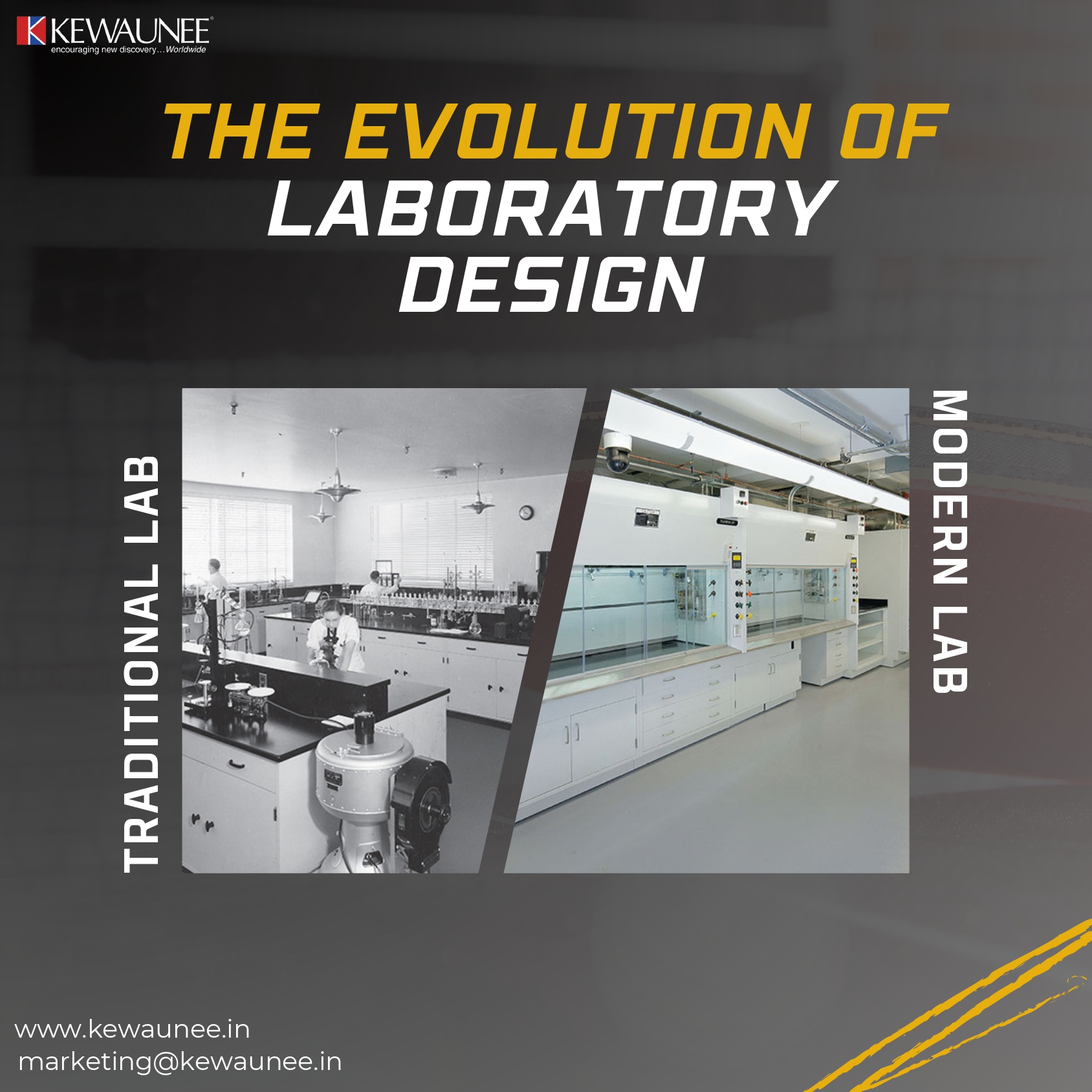The Evolution of Laboratory Design
Laboratory design is a critical factor in facilitating scientific research and innovation. The arrangement of workspaces, equipment, and infrastructure greatly influences workflow, collaboration, and productivity within research environments.
In this blog post, we will delve into the evolution of laboratory design, tracing the transition from traditional research spaces to the modern, cutting-edge facilities of today. We will explore the significance of laboratory design in research and provide a brief overview of traditional laboratory design.
Traditional Laboratory Design
Traditional research spaces were characterized by cramped and segmented work areas, limited natural light, and rigid layouts that hindered collaboration and creativity.
Researchers often worked in isolation, with the design focusing more on individual workstations rather than promoting interaction.
Workflow and layout considerations were suboptimal, leading to inefficiencies and wasted time. Additionally, traditional laboratories faced challenges such as limited equipment availability, infrastructure requirements, and the integration of specialized technologies.
Safety and regulatory compliance issues, including hazardous materials handling and containment measures, were critical concerns.
The Need for Change
Advancements in scientific research have brought about the need for laboratory design to evolve. Research methodologies have become more complex and interdisciplinary collaborations have become more prevalent.
Traditional laboratory design limitations can no longer meet the demands of modern research. There is an increasing recognition of the importance of flexibility and adaptability in laboratory design to foster innovation, promote collaboration, and accommodate the integration of emerging technologies.
Modern Laboratory Design Concepts
Modern laboratory design concepts have emerged to address the changing needs of researchers and the evolving landscape of scientific research.
These concepts include:
- Integration of technology and automation: The incorporation of advanced technologies and automation has revolutionized scientific research, enhancing efficiency, accuracy, and data management. Automated processes and sophisticated instrumentation enable researchers to perform experiments and collect data more efficiently.
- Open and collaborative spaces: Modern research spaces prioritize collaboration and communication among researchers. Open floor plans, shared workspaces, and common areas foster interaction, interdisciplinary collaborations, and the exchange of ideas.
- Ergonomics and user-centered design: Researchers’ well-being and comfort are prioritized through ergonomic design principles. Ergonomic workstations, adjustable furniture, and proper lighting contribute to a healthier and more productive work environment.
- Sustainability and energy efficiency: Modern laboratory design emphasizes sustainability and energy efficiency. Green technologies, energy-efficient equipment, and waste management systems are incorporated to reduce the environmental footprint of research facilities.
- Safety and containment measures: Ensuring the safety of researchers and compliance with regulatory standards remains a crucial aspect of modern laboratory design. State-of-the-art safety systems, proper ventilation, and effective containment measures for hazardous materials are implemented.
Challenges and Considerations in Modern Laboratory Design
While modern laboratory design offers numerous benefits, there are challenges and considerations to address:
- Budget constraints and cost-effectiveness: Designing and implementing modern laboratory spaces can be costly. Striking a balance between design innovation and cost-effectiveness is a challenge that requires careful planning and resource allocation.
- Regulatory compliance and safety regulations: Modern laboratory design must comply with stringent safety regulations and regulatory requirements. Ensuring the implementation of proper safety measures and adherence to standards is crucial to protect researchers and maintain compliance.
- Flexibility for future needs and changing research priorities: Designing laboratories with flexibility in mind is essential to accommodate future research needs and adapt to changing scientific priorities. Modular design approaches and adaptable spaces allow for easier reconfiguration and repurposing of research areas.
- Balancing privacy and collaboration: While collaboration is essential, researchers often require privacy for focused work or experiments. Striking a balance between open and collaborative spaces and providing privacy for individual research activities is a consideration in modern laboratory design.
The Future of Laboratory Design
The future of laboratory design holds exciting possibilities for scientific research. Emerging trends and technologies will further optimize research processes and outcomes.
Some key areas of development include:
- Integration of artificial intelligence and machine learning: Artificial intelligence and machine learning technologies will play an increasingly significant role in laboratory design, automating data analysis, optimizing experiments, and enhancing research outcomes.
- Modular and adaptable design approaches: Modular design concepts will allow research spaces to be quickly reconfigured or expanded to meet evolving needs. Adaptable designs will enable research facilities to stay up-to-date with changing research priorities and technological advancements.
- Role of virtual and augmented reality in laboratory design: Virtual and augmented reality technologies will enable researchers to visualize experiments, simulate complex scenarios, and enhance training in a virtual environment. These technologies will aid in design planning, training, and optimizing laboratory workflows.
Conclusion
The evolution of laboratory design has transformed research spaces from traditional environments to modern, innovative settings. Designing research spaces that prioritize collaboration, efficiency, safety, and sustainability is crucial for fostering scientific breakthroughs.
By embracing modern laboratory design concepts, researchers can maximize their potential, foster interdisciplinary collaborations, and make significant contributions to their respective fields of study.
Comments are closed.











